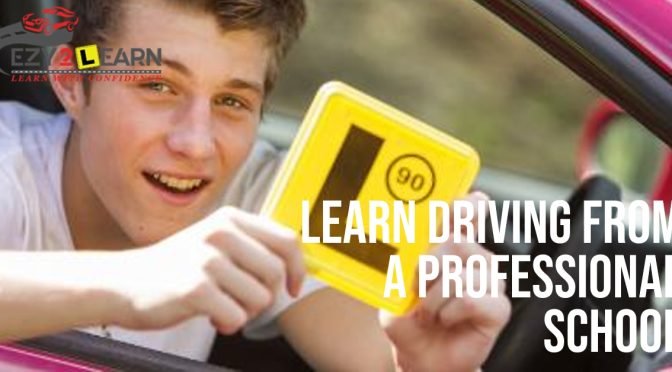Learning to drive is a major milestone that brings independence and freedom. For new drivers in Sydney, taking a formal driving course offers a wealth of benefits beyond simply getting a license. With professional driving courses, learners gain the skills, confidence, and knowledge needed to navigate Sydney’s busy roads safely. Here are the top five benefits of taking a driving course in Sydney.
1. Comprehensive Learning Experience
Driving courses in Sydney offer a well-rounded curriculum that covers everything from basic driving skills to advanced road safety techniques. When you enroll in a professional driving course, you can expect to learn about:
- Traffic Rules and Regulations: Courses ensure that learners understand Australian traffic laws, which are essential for safe and legal driving.
- Road Signs and Symbols: Professional instructors teach students the meaning of various road signs, symbols, and markings, helping them to make quick decisions while on the road.
- Vehicle Handling: Courses include practical lessons on how to control and handle a vehicle, from accelerating and braking to reversing and parking.
Taking a driving course in Sydney provides a structured and thorough approach to learning that builds a solid foundation for a lifetime of safe driving.
2. Enhanced Road Safety and Hazard Awareness
One of the key benefits of a driving course is the emphasis on road safety and hazard awareness. Sydney’s busy streets, highways, and unique driving conditions require drivers to be alert and aware at all times. Driving courses focus on defensive driving techniques, which teach learners to anticipate and respond to potential hazards before they become dangerous.
- Defensive Driving Skills: Learning how to react in emergency situations, such as sudden stops or erratic drivers, is a critical component of a driving course.
- Managing Adverse Conditions: Driving in rain, fog, or at night can be challenging for new drivers. Driving courses provide experience and training in dealing with these adverse conditions safely.
- Safety Precautions: Courses emphasize the importance of wearing seatbelts, adjusting mirrors, checking blind spots, and maintaining a safe following distance.
This strong focus on safety prepares drivers not just for the road test, but for real-world situations where quick decision-making is essential.
3. Boosts Confidence and Reduces Anxiety
Many new drivers feel nervous about getting behind the wheel, especially in a bustling city like Sydney. A driving course is a safe space where learners can gradually build confidence and learn to handle the stress of driving in different environments.
- Supportive Learning Environment: With a professional instructor, learners receive constructive feedback, guidance, and encouragement that build confidence over time.
- Gradual Skill Building: Courses start with the basics and gradually introduce more complex driving scenarios. This approach helps learners feel comfortable as they progress.
- Practical Driving Test Preparation: Since passing the driving test is a major goal, courses often include mock tests that simulate real test conditions, helping to reduce anxiety on the actual test day.
By the end of the course, learners often feel more assured in their abilities, making them less likely to feel overwhelmed or stressed when driving independently.
4. Saves Time and Money in the Long Run
While taking a driving course in Sydney may seem like an added expense, it can actually save time and money in the long term. Courses increase the chances of passing the driving test on the first attempt, saving fees on retakes.
- Avoiding Costly Mistakes: Many new drivers make common errors due to lack of experience, leading to fines or even accidents. Driving courses help minimize these risks, which can save money on repairs, insurance premiums, and fines.
- Improved Fuel Efficiency: Professional instructors often teach eco-friendly driving habits, such as smooth acceleration and deceleration, which can improve fuel efficiency and reduce costs.
- Discounts on Insurance: Many insurance companies offer discounts to drivers who have completed certified driving courses, as they are considered lower risk.
Learning safe, efficient driving habits through a course leads to fewer expenses down the road, making it a worthwhile investment.
5. Increases Job Opportunities and Flexibility
In a bustling city like Sydney, a driver’s license can open up various job opportunities, particularly in fields like delivery, logistics, and sales. Employers look favorably on candidates who have completed a formal driving course, as it demonstrates responsibility and commitment to safe driving.
- Expands Job Options: From delivery drivers to rideshare operators, having a valid license with verified training can make candidates eligible for a range of roles.
- Opportunity for Higher-Paying Roles: Certain jobs, such as those requiring a commercial driver’s license or experience in defensive driving, often pay more. A formal driving course can be a stepping stone to these positions.
- Increased Mobility: For those relying on public transport, obtaining a license through a driving course can provide more flexibility in commuting and job searching across Sydney’s extensive urban and suburban areas.
Having a recognized driving qualification can be a significant advantage in today’s job market, especially in a city as vast and opportunity-rich as Sydney.
Conclusion
A driving course in Sydney offers numerous benefits that extend far beyond just passing a test. From comprehensive training and road safety to confidence building, cost savings, and career opportunities, these courses set learners up for a lifetime of safe, skilled, and confident driving. If you’re considering taking a driving course, remember that it’s an investment in not only your driving skills but also your safety and independence on the road.
With structured guidance from expert instructors, you can build the knowledge and abilities necessary to drive responsibly and successfully navigate Sydney’s diverse and sometimes challenging road environments.
 0405 477 217
0405 477 217




 Enquire Now
Enquire Now







